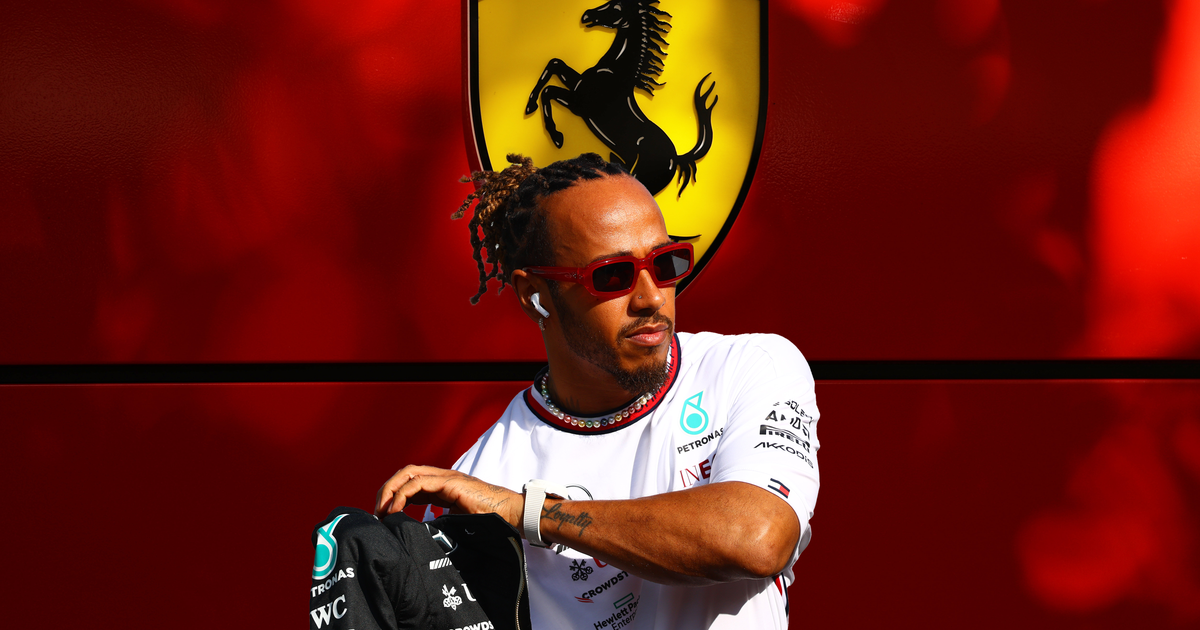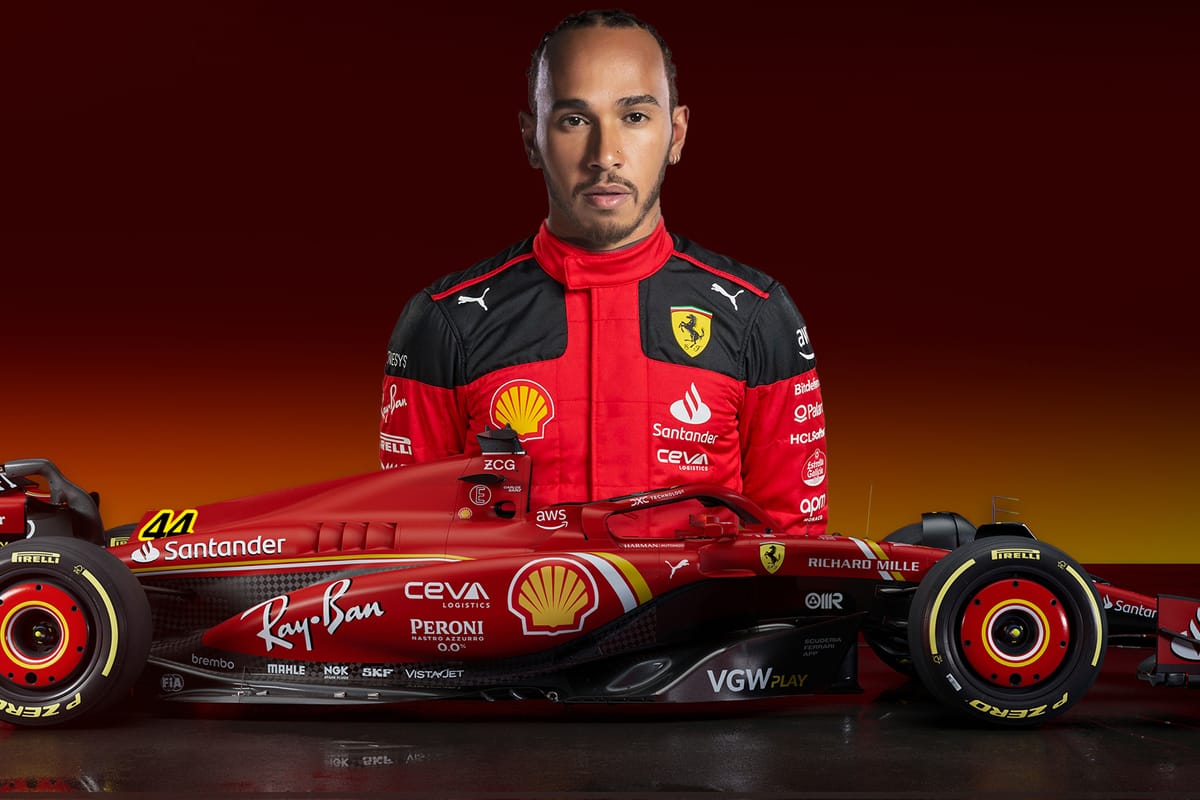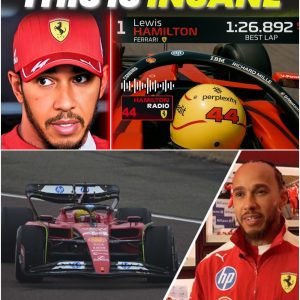Deep inside Ferrari’s headquarters at Maranello lies a safe containing a document that has already altered the balance of power in Formula 1. Within its pages, buried in dense legal jargon, sits a clause so unusual that seasoned insiders are calling it unprecedented in modern F1.
When Lewis Hamilton signed with Ferrari, the headlines were dominated by record-breaking salary figures, romanticized notions of the sport’s greatest driver in the sport’s most iconic car, and the dream of one final push for a record eighth world championship. What few noticed at the time was a single contractual detail—a clause that hands Hamilton something no other driver has enjoyed in the modern era: absolute control over his future.
“Teams always hold some leverage—performance triggers, mutual options, buyout clauses. That’s how Formula 1 has worked for decades,” reveals a veteran team principal who spoke on condition of anonymity. “For Ferrari to give that up completely? It tells you how desperately they wanted Hamilton. I’ve never seen anything like it in thirty years of the sport.”

A Power Shift in Formula 1
The clause in question ensures that after Hamilton’s initial two-year term, he alone can decide whether to extend into 2027. Ferrari has no say. Performance, politics, even age—none of it matters. If Hamilton chooses to stay, he stays.
In a sport notorious for its ruthlessness—where underperforming drivers are swiftly replaced—this contract flips convention on its head. For once, the driver holds all the cards, not the team.
The implications are enormous. Ferrari’s leadership may privately debate whether Hamilton is the right long-term fit alongside Charles Leclerc and rising star Oliver Bearman, but those conversations are moot. The power dynamic has shifted. Ferrari may be the most famous team in F1, but Hamilton alone decides whether he remains in red beyond 2026.
How Ferrari Got Here
The seeds of this extraordinary deal were planted in late 2023, when Ferrari team principal Frédéric Vasseur reignited talks with Hamilton. The two men share a deep history. Vasseur managed Hamilton in Formula 3 and GP2—years when Hamilton was still an ambitious teenager carving his path to Formula 1.
“Fred and Lewis trust each other in a way that’s rare in this sport,” says a former ART Grand Prix engineer. “Promises are often broken in Formula 1. But when Fred makes one, Lewis believes him. That trust was decisive.”
Vasseur’s pitch was bold. Ferrari, he explained, was already diverting huge resources toward the 2026 regulation reset, when F1 will switch to 50% hybrid power and 100% sustainable fuels. The Scuderia aimed not just to compete but to lead the new era.
For Hamilton, who turned 40 in 2025 and has little left to prove, this was a once-in-a-lifetime chance: join Ferrari, spearhead its new project, and finally claim the eighth title cruelly denied him in Abu Dhabi 2021.
But Hamilton’s leverage was immense. He wasn’t desperate for a seat—Ferrari was desperate for him. That imbalance allowed his management team to negotiate terms unthinkable for anyone else.
“Normally, the team dictates. This time, Hamilton’s camp dictated everything,” admits one source close to the talks. “Ferrari said yes because they had no choice. They wanted him that badly.”

The Domino Effect on Ferrari’s Future
The unusual clause has already triggered a chain reaction across Ferrari’s long-term planning. The most directly affected is Oliver Bearman, the Ferrari Academy prodigy who stunned the paddock with a top-five finish on his Grand Prix debut in 2024.
The plan was clear: two years at Haas, then evaluation for a Ferrari seat in 2027. But if Hamilton extends, Bearman’s pathway narrows dramatically.
“Ollie is in limbo,” concedes a Ferrari driver coach. “If Hamilton stays, Bearman either gets loaned elsewhere or risks being lost to another team. And make no mistake—Mercedes and others are watching closely.”
The irony is painful. In securing Hamilton, Ferrari may inadvertently drive away its brightest homegrown talent in years.
More Than Just Performance
For Ferrari chairman John Elkann, however, Hamilton’s value was never purely about lap times. Signing the sport’s global superstar was as much about image and commerce as it was about performance.
“Hamilton is a cultural force,” explains a Ferrari board member. “Fashion, activism, music—he transcends Formula 1. Sponsors who would never have considered Ferrari before are now calling us. The commercial impact is extraordinary.”
The numbers back it up. Ferrari’s Hamilton-branded merchandise sold out within hours. Social media engagement doubled. Sponsorship revenue soared, with brands lining up to associate with Hamilton’s arrival.
“From a business standpoint, the deal has already paid for itself,” says one sports marketing executive. “Even if Hamilton never wins a race for Ferrari, the commercial impact justifies the risk. That’s why Ferrari accepted such an unorthodox clause.”

The On-Track Struggles
Yet Hamilton’s first season in red has been far from straightforward. The SF-25, brilliant in flashes, has proven temperamental—fast in narrow conditions, but erratic outside its performance window. A sprint race win in China and podium in Miami hinted at promise, but brutal weekends like Hungary exposed the car’s flaws.
“The car only works in a tiny window,” admitted one Ferrari engineer. “Inside that window, we can fight for wins. Outside it, we’re midfield. That’s the reality.”
For Hamilton, adapting hasn’t been easy. After years in Mercedes machines tailored to his driving style, the Ferrari’s understeer and braking instability forced him to modify habits formed across 300 Grands Prix. He has matched Leclerc in races, but qualifying pace—his hallmark for years—remains elusive.
Speculation inevitably followed. Did Hamilton regret leaving Mercedes, just as his former team appeared to recover its competitiveness? Hamilton was quick to dismiss it.
“No regrets whatsoever,” he said at Spa. “This is a long-term project. Ferrari is where I want to finish my career—whether that’s next year or five years from now.”

The Long View: 2026 and Beyond
Everything points to 2026. Ferrari has already begun shifting resources toward the new regulations. Loïc Serra, lured from Mercedes, is shaping the chassis program with Hamilton’s driving style in mind. The new Ferrari power unit is already running on the test bench, reportedly surpassing internal expectations for efficiency.
This is why Hamilton fought for his unilateral extension. If the 2026 car delivers, he wants the option to stay and chase glory. If it fails, he retains the power to walk away—or to stay regardless, on his own terms.
“It’s the perfect insurance policy,” says one contracts lawyer. “Hamilton takes all the upside of Ferrari’s 2026 project with none of the downside risk. The team has tied its hands, but he’s free to choose.”
Legacy at Stake
For Ferrari, the gamble is enormous. By betting on Hamilton’s star power, they risk compromising the future of talents like Bearman. By ceding contractual control, they’ve created a situation where the world’s most famous team is at the mercy of one man’s decision.
For Hamilton, the stakes are no less dramatic. At 42 in 2027, he would be testing the limits of longevity in modern Formula 1. No driver has fought for titles at that age in the turbo-hybrid era. Yet Hamilton, fitter than ever and still obsessed with an elusive eighth crown, believes he can.
“Age is just a number,” he insists. “My training is smarter, my recovery better, my hunger the same. Experience counts for more than people realize.”
Conclusion: A Clause That Could Define an Era
The Hamilton-Ferrari partnership is more than a headline-grabbing transfer. It is a shift in the balance of power within Formula 1—a driver dictating terms to the most famous team in racing.
Will Ferrari’s gamble deliver a championship, or will Hamilton’s control prove a costly mistake that blocks the rise of their next star? Will the Scuderia’s 2026 project finally end their drought, or will it deepen the frustration of tifosi who have waited two decades for glory?
The answers remain locked in that Maranello safe, embedded in a clause that has already rewritten Formula 1’s rules of engagement. One way or another, history will judge whether Hamilton’s final great gamble secured immortality—or merely prolonged the wait for Ferrari’s redemption.





